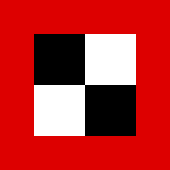4th Army (German Empire)
The 4th Army / Army High Command 4 (AOK 4) was a large unit and the associated command authority of the German army during the First World War (1914-1918). It comprised several army or reserve corps as well as numerous special troops.
history
|
As on August 2, 1914 German Empire , the mobilization took place, were from the eight existing Army Inspections eight armies formed. From the VI. Army inspection was in Berlin , the Army High Command 4 . The units of the 4th Army gathered in the Sankt Vith area . In August 1914 the army comprised the following corps units:
The 4th Army, together with the 5th Army, formed the middle group of the German Western Army, which, according to the Schlieffen Plan , was intended for the offensive against France. At the end of August 1914, both armies fended off an advance by the French army on the Meuse and the Ardennes (→ Battle of Neufchâteau and Longwy ) and then pushed the opposing troops back behind the Aisne . When the German right wing armies ( 1st and 2nd Army) withdrew as a result of the defeat in the Marne Battle at the beginning of September 1914 , the 4th Army also had to be withdrawn. They moved into new positions in Champagne before the front froze in trench warfare. In the " race to the sea " that was now beginning , when both sides tried to bypass their respective northern flank, the Supreme Army Command brought in some new reserve corps in the second half of October, which were ultimately to be deployed near Ypres in Flanders . To command these troops, Army High Command 4 was detached from the front and relocated to the north. The troops previously subordinated to them were distributed to the neighboring armies. As a result, the battles of Flanders broke out in Flanders .
From October 20, 1914 to October 21, 1918, the headquarters of the 4th Army was in Tielt , although it was only briefly moved to Courtrai and Roubaix. The return march ended on November 28, 1918 in Münster .
4th Army field bookstore
Just like the field postcards sold by Belgian publishers at the time of the First World War or those from German publishers such as “[...] Dr. Trenkler & Co. , C. Hünich / Berlin-Charlottenburg, Friedrich Stünkel / Elberfeld, [...] field bookstore of the 4th Army ”and others such as the Hanoverian art publisher Heinrich Carle is“ [...] a detailed study of such publishers ” and their "[...] scientific importance" in terms of the history of world war I despite of C. Brock published in 2009 writing between home and front before, "[...] not in detail investigated ".
References
Web links
- The highest command posts in the army. on deutsche-kriegsgeschichte.de (as of April 16, 2010)
- Editions digitized by the Austrian National Library : War newspaper of the 4th Army (online at ANNO ).
literature
- Hermann Cron: History of the German Army in the World War 1914–1918. Siegismund, Berlin 1937 ( History of the Royal Prussian Army and the German Imperial Army 5).
- 4th Army war newspaper. 1915–1918 ( LLB Detmold )
Individual evidence
- ↑ a b Hermann Cron: History of the German Army in World Wars 1914–1918 , Berlin 1937, p. 395
- ^ Hermann Stegemann: History of the war. Volume 1. Stuttgart / Berlin 1917, p. 103.
- ^ Hermann Cron: History of the German Army in World Wars 1914–1918 , Berlin 1937, p. 76
- ^ Rik Opsommer : Field postcards from West Flanders. Historical research possibilities and limitations of an everyday medium in the First World War. In: Conference "Writing in War - Writing from War": Field Post in the Age of World Wars. Museum for Communication Berlin , 13.-15. September 2010 on the site feldpost-archiv.de
